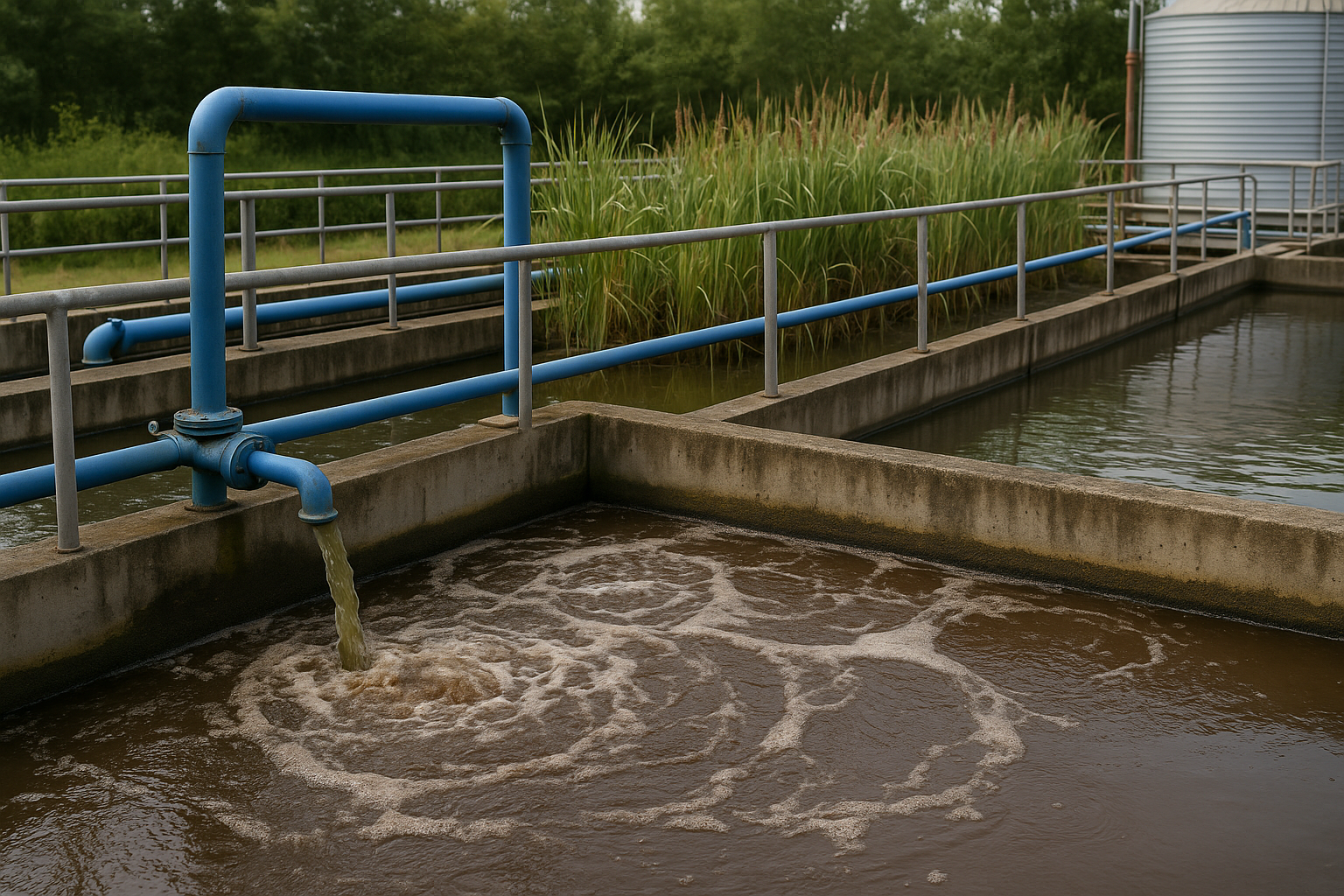Bioremediation strategy targets high-toxicity wastewater using engineered microbes
Traditional wastewater treatments rely heavily on physicochemical processes like coagulation, precipitation, and advanced oxidation. While these methods are effective in pollutant removal, they are often expensive, require continuous chemical input, and produce secondary waste. Furthermore, these approaches are typically inflexible and incapable of responding to the dynamic composition of industrial effluents.

In a newly published study, researchers have outlined a comprehensive framework for the use of bioremediation in treating complex industrial effluents. Their findings, presented in the study titled “Sustainable and Advanced Strategies for Bioremediation of Highly Contaminated Wastewater” and published in Processes, propose the integration of natural microbial systems with advanced molecular tools to restore water quality and environmental balance.
The review highlights the urgent need for scalable, sustainable treatment technologies amid increasing wastewater volumes generated by industrial growth, population expansion, and environmental degradation. It positions bioremediation, rooted in the action of living organisms, as a viable alternative to conventional chemical or energy-intensive treatment systems, particularly for tackling persistent, multi-component pollution.
What makes highly contaminated wastewater so difficult to treat?
Sectors such as distilleries, pharmaceutical manufacturing, paper production, and chemical processing produce effluents with elevated levels of both organic and inorganic pollutants. These include toxic metals, synthetic chemicals, and high concentrations of suspended solids. Wastewater from such sources often exhibits extreme chemical oxygen demand (COD) and biological oxygen demand (BOD), making it resistant to conventional biological degradation and difficult to treat within regulatory limits.
Traditional wastewater treatments rely heavily on physicochemical processes like coagulation, precipitation, and advanced oxidation. While these methods are effective in pollutant removal, they are often expensive, require continuous chemical input, and produce secondary waste. Furthermore, these approaches are typically inflexible and incapable of responding to the dynamic composition of industrial effluents.
On the other hand, the bioremediation strategies explored in this study offer a low-cost, adaptive, and environmentally friendly solution. The authors emphasize that microbial-based treatments can harness both naturally occurring and synthetically engineered organisms to break down a wide range of contaminants, often simultaneously, without generating hazardous by-products. The key lies in selecting or designing microbial consortia with high biosorption capacity and resilience to toxic environments.
How can microbial systems and molecular tools transform wastewater treatment?
The study analyses various microbial bioremediation techniques and propose integrating them with modern bioengineering practices to enhance performance. The central approach involves deploying microbial consortia, combinations of bacteria, fungi, and algae, that work synergistically to degrade pollutants. These communities offer broader metabolic capabilities and greater resistance to fluctuating environmental conditions compared to individual strains.
Among the most promising strategies are biosorption, where microorganisms absorb contaminants onto their cell surfaces, and enzymatic degradation, where internal biochemical pathways break down organic molecules. Techniques such as bioaugmentation, which introduces specific strains into wastewater systems, and biostimulation, which optimizes environmental conditions to favor microbial growth, are also highlighted.
What distinguishes this study is its emphasis on the application of omics technologies, genomics, proteomics, and metabolomics, to wastewater bioremediation. These tools allow researchers to map microbial pathways, identify key degradation enzymes, and monitor stress responses to pollutants. The result is a more targeted, data-driven approach to microbial selection and system design.
Moreover, the researchers advocate for the development of immobilized cell systems, biofilm reactors, and constructed wetlands, which allow controlled and efficient pollutant breakdown while facilitating microbial reuse and minimizing land use. The authors also point to the potential of genetic engineering to enhance microbial resistance, specificity, and degradative efficiency, especially in treating recalcitrant substances such as pharmaceuticals and industrial dyes.
Why is bioremediation crucial for sustainability and what comes next?
Bioremediation addresses multiple sustainability criteria, including reduced energy consumption, minimal chemical usage, and the potential for resource recovery through circular practices.
The environmental benefits of microbial-based treatment include the natural restoration of ecosystems, reduced greenhouse gas emissions compared to energy-intensive alternatives, and a minimized carbon footprint for water utilities. Socially, the adoption of decentralized bioremediation systems can support safe water access in underserved areas and reduce the health risks associated with untreated wastewater.
Yet the study also identifies clear gaps in current research and implementation. There is a lack of integrated frameworks that combine real-time monitoring with adaptive microbial systems, especially for diverse and unpredictable industrial waste streams. Small and medium-sized enterprises (SMEs) in developing economies often lack access to these innovations, and few pilot-scale validations exist outside laboratory environments.
The authors further recommend broader collaboration across microbiology, environmental engineering, and systems biology to build comprehensive, field-ready solutions. They also advocate for incorporating bioremediation into circular economy models, where treated water, recovered materials, and biomass are reintegrated into production cycles.
To accelerate real-world adoption, the study calls for government support through incentives, policy reforms, and funding for demonstration projects. Only through such interdisciplinary and institutional efforts can bioremediation move from academic potential to industrial norm.
- FIRST PUBLISHED IN:
- Devdiscourse










